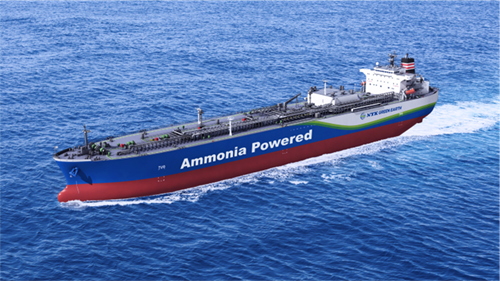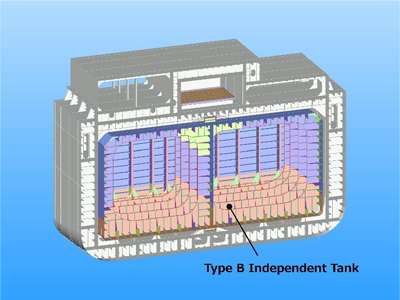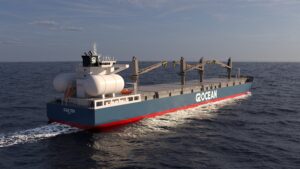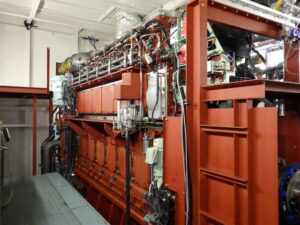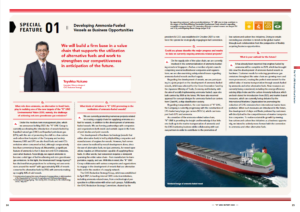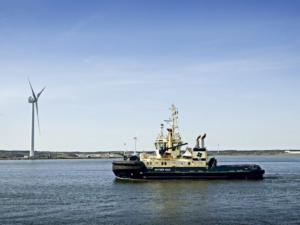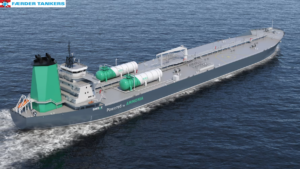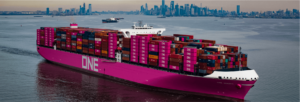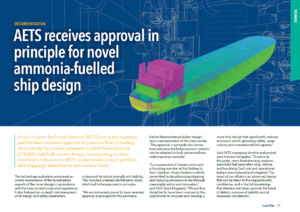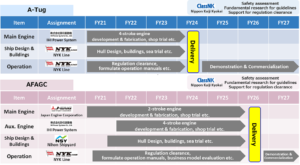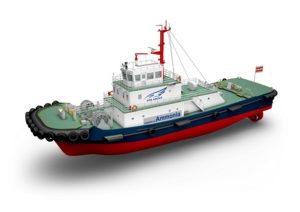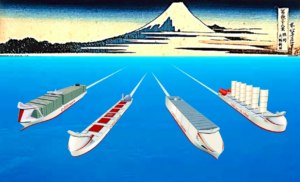An NYK-led consortium, which includes Japan Engine Corporation, IHI Power Systems and Nihon Shipyard, has announced that a construction contract has been signed with Japan Marine United to build its 40,000 m3 ammonia-fueled medium gas carrier (AFMGC) in Ariake. The vessel is due to be delivered in November 2026.
Content Related to ClassNK
NYK's ammonia-powered gas carrier to hit the water in late 2026
Marine ammonia fuel systems, tanks, charters and vessel AiPs
In marine ammonia news to begin 2024, we explore a volume-efficient, “prismatic” ammonia fuel tank design, a new long-term charter for ammonia shipping in the Pacific region, and two global gas exporters ordering ammonia-capable carriers for their fleets.
Vessel news: bunker tankers, VLACs, pulp carriers & dual-fuel new builds
In vessel news this week:
- ClassNK and partners are working on a joint study for the development of an ammonia-powered, ammonia bunkering tanker.
- Capital Gas’ order of two very large ammonia carriers to be built by Samsung Heavy Industries are scheduled for delivery by H2 2027.
- G2 Ocean has triggered its option of an additional two ammonia ready vessels from Grieg Maritime Group.
- WinGD and KSS Line will explore WinGD’s X-DF-A engines for newbuild vessels, focussing on midsize & very large carriers.
IHI, NYK Line report successful marine engine testing in Japan
Successful testing has been completed at IHI’s facilities in Ota, Japan. A four-stroke marine engine - fully integrated with exhaust gas aftertreatment and fuel supply systems - produced stable operations running on up to 80% ammonia fuel. Emissions of dinitrogen monoxide (N2O) and ammonia slip were reported as “virtually zero”.
Maritime ammonia developments in South Korea, Japan
In this week’s maritime ammonia news:
- Hyundai Heavy Industries, Lloyd’s Register and Korea National Oil Corporation have signed a new agreement to jointly develop an ammonia floating storage and regasification unit, or FSRU.
- KSS Line and Samsung C&T will cooperate to establish a clean hydrogen/ammonia transportation service, powered by alternative fuels.
- In Japan, K Line has announced ammonia will underpin its decarbonisation strategy to 2050, with AiP granted for a new Newcastlemax bulk carrier design.
- And the first of two CCU ammonia shipments have reached Ulsan from Saudi Arabia, with importer Lotte Fine Chemical leading development of a clean ammonia supply chain in the Yellow Sea.
EverWind Fuels and Svitzer to jointly develop ammonia-powered tugboat
EverWind Fuels and Svitzer have signed an MoU to deploy an ammonia-powered commercial tug in the Canso Strait, adjacent to Point Tupper: the location of EverWind’s under-development hydrogen & ammonia production hub.
Ammonia-powered vessels & maritime engines: development updates
This week we explore four announcements in the maritime ammonia space:
- Færder Tankers Norway will receive $20 million in Enova funding to develop two ammonia-powered vessel designs: a tanker and a car carrier.
- Mitsubishi Shipbuilding has completed a conceptual design for an LPG-ammonia dual-fuel VLGC, with Approval in Principle granted by ClassNK.
- Delivery dates have been set for the first eight of Höegh Autoliners’ Aurora-class, ammonia-powered car carriers, with China Merchants Heavy Industry to deliver vessels from late 2024.
- WinGD and Hyundai Heavy Industries will collaborate to deliver the first WinGD two-stroke engine capable of running on ammonia by 2025.
Ocean Network Express: adding ammonia power to the fleet
Singapore-based Ocean Network Express has signed contracts with two ship-builders for construction of five ammonia-ready VLCCs each (ten total), to be delivered in 2025. In Japan, NYK Line, IHI Power Systems and ClassNK will develop, deliver and fuel an ammonia-powered tugboat for the City of Yokohama, with the vessel to be delivered and working in the port in 2024.
New ammonia-powered vessels: Newcastlemax & Panamax class
Rio Tinto and AngloEastern have announced they will develop Newcastlemax class, ammonia-powered bulk carriers. The dry cargo vessels will be the maximum size allowed to dock in the Port of Newcastle, Australia: an important coal & iron ore port in global maritime trade. Both AngloEastern and Rio Tinto are members of an Itochu-led maritime fuel study investigating the use of ammonia. In Japan, a "greener ships" consortium has produced its first-ever ammonia-powered design: a Panamax-class bulk carrier. And the China State Shipbuilding Corporation will develop two 93,000 m3 ammonia-powered ammonia carrier vessels, with Bureau Veritas granting AiP for the vessel design.
Wärtsilä & Møkster join forces, Japanese maritime consortium takes next steps
Wärtsilä and Simon Møkster Shipping will explore the feasibility of using ammonia as the main fuel in dual fuel engines. Currently Møkster's fleet operates on LNG. In Japan, NYK Line, Japan Engine Corporation, IHI Power Systems, Nihon Shipyards and ClassNK will all collaborate on a demonstration project of ammonia-powered vessels in Japan. First announced in 2020 with three vessel concepts, two of the three vessel designs now have a commercialisation schedule fully defined (the A Tug and the AFAGC).
Japan's NYK and partners to develop ammonia fueled and fueling vessels
In recent weeks, the Japanese shipping company NYK Line has announced a series of high-profile research and development collaborations that aim to establish ammonia fueled vessels and fuel supply. Its partners in these projects include classification society Class NK, engine manufacturer IHI Power Systems, and shipbuilder Japan Marine United Corporation. Three vessel types have been announced, so far, including an ammonia-fueled ammonia gas carrier, an ammonia barge for offshore bunkering, and an ammonia-fueled tugboat (for navigating the barge). Pushing beyond the initial research phase, these collaborations aim for commercialization and to put these vessels “into practical use.”
Maritime Ammonia: ready for demonstration
At least four major maritime ammonia projects have been announced in the last few weeks, each of which aims to demonstrate an ammonia-fueled vessel operating at sea. In Norway, Color Fantasy, the world's largest RORO cruise liner, will pilot ammonia fuel. Across the broader Nordic region, the Global Maritime Forum has launched NoGAPS, a major consortium that aims to deploy "the world's first ammonia powered deep sea vessel" by 2025. In Japan, a new industry consortium has launched that goes beyond on-board ship technology to include "owning and operating the ships, supplying ammonia fuel and developing ammonia supply facilities." And the Ministry of Land, Infrastructure, Transport and Tourism (MLIT), which published its roadmap last month, aims to demonstrate ammonia fuel on "an actual ship from 2028" — specifically, a 80,000 dwt ammonia-fueled bulk carrier.
